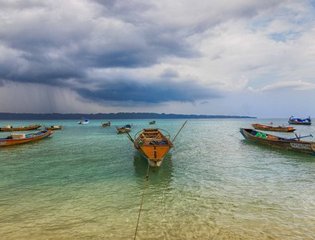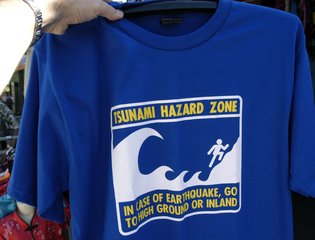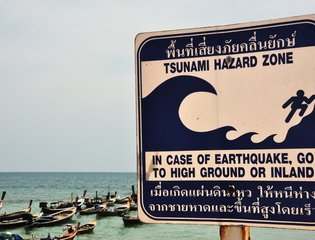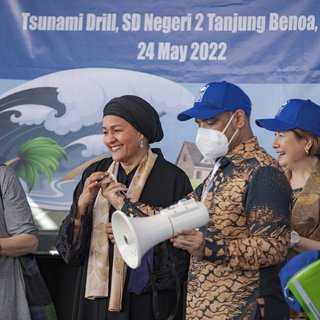2024 marks the 20th anniversary of the Indian Ocean tsunami.
Following the 2004 Asian tsunami, the Tsunami Evaluation Coalition (TEC), a unique system-wide initiative, was set up to learn lessons from the international humanitarian response. It was the first large-scale, collaborative humanitarian evaluation of its kind. And the last on such a scale... (to date).
We believe as a sector we have an obligation to examine why, after 20 years, many of the same issues that the Coalition identified remain unresolved and why there is so little appetite for system-wide learning today. Join the conversation!
"If humanitarians aim to make aid more relevant, better serve affected communities, and help their organisations adapt to shifting crises, they must learn from their mistakes and hold themselves accountable for failing to learn. To truly evolve, the sector must embrace both successes and failures, using every experience as an opportunity for improvement.”
Ali Buzurukov, Chief Evaluation and Oversight Section, OCHA
Background on the Asian tsunami humanitarian response
On the 26th December 2004, a massive tsunami struck coastal regions in 14 countries across southern Asia. It caused unprecedented destruction and claimed nearly a quarter of a million lives. It was one of history's worst humanitarian disasters and it reshaped the global response to humanitarian crises.
"The 20th anniversary provides an opportunity to highlight the dramatic, spectacular and unique nature of this disaster. It’s an interesting story in itself - showing what has improved, but also what remains unchanged."
Johan Schaar, Special Representative of the Secretary General for the Tsunami Operation, IFRC 2005-7
An estimated 230,000 people were killed, millions were displaced, and entire coastal communities were destroyed, with an estimated $10 billion in loss and damage.
The tsunami was unique in terms of the breadth of devastation it caused, but also the scale of the response that it triggered. It remains one of, if not the most generous and immediately-funded responses in humanitarian history.
Over $14 billion in relief and reconstruction funds were raised.
The volumes of aid per affected person were of a completely different order of magnitude to those in previous disasters. The oversupply of goods and the large number of agencies involved in the response meant that almost everyone got some help during the relief phase.
According to findings from the TEC:
* Funding levels were misaligned with actual needs, along with the ability of humanitarian organisations to absorb such amounts
* Goods and services were parachuted in without looking at the capabilities that already existed in the areas affected and how to build upon them
* There was significant pressure on aid organisations to spend money quickly, which led to aid that was of low quality and inappropriate for people’s needs
* A ‘second tsunami’ of official and informal aid organisations descended upon the impacted areas, making coordination more difficult. It also led to competition among agencies for people and communities to support
What were the key findings of the Tsunami Evaluation Coalition?
The Tsunami Evaluation Coalition noted that its findings were the same as the findings from past crises, underscoring the problem with change and learning inherent in the sector:
Despite the huge amounts of funding, the tsunami response showed the same problems of inappropriate aid, lack of consultation with beneficiaries, and competition between agencies as in other large emergencies. Both the response to the Rwanda crisis in 1994 and the Kosovo crisis in 1999 showed many of the same problems as the tsunami.
Tsunami Evaluation Coalition report, July 2006
Are these challenges still relevant today?
How far has the humanitarian system come to addressing the key issues that the TEC highlighted?
What are your views? Share them with us by emailing us at: comms@alnap.org.
We will publish your pieces on our website as part of our 2004 Tsunami: 20 years of learning series later in the year.
What deters the humanitarian sector from learning collectively at a system-wide level?
Since the Tsunami Evaluation Coalition, there has not been a system-wide collective learning effort quite like it.
While learning is happening, it tends to take place in fragmented pockets.
In place of system-wide learning, humanitarians have seen the rise of system-wide reform agendas. Each of these seek to ‘transform’ the system but remain detached from one another and therefore unable to cross-fertilise valuable lessons on how to improve.
Why is this the case? Is it a lack of resources, the complexity and fragmentation of today's humanitarian system or the slow pace at which lessons from evaluations take to materialise?
As we mark the 20th anniversary of the 2004 tsunami, we want your help to better understand the collective learning landscape today so that together we can unblock the obstacles to future learning and change.
"The center of gravity in the humanitarian world has shifted. It used to be in the North, but now it's more mixed. Even then, there wasn’t a clear center—it was a messy crowd. This disorganisation is part of why replicating something like the TEC would be so difficult. Serious groundwork would be needed, especially if we’re to take the voices of the Global South seriously."
Ian Christopolos, Lead author of the TEC’s Links between relief, rehabilitation and development in the tsunami response report




